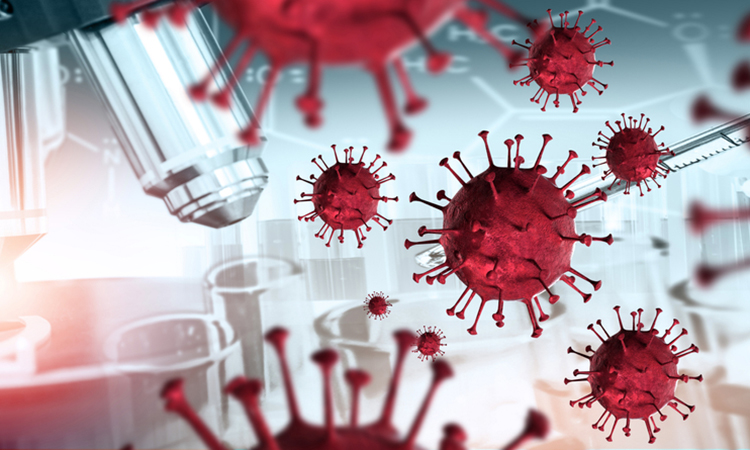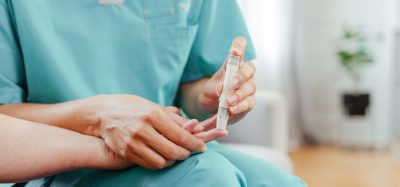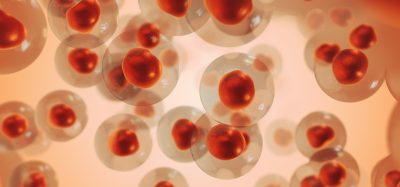Serum biomarkers for COVID-19 identified
Posted: 7 March 2024 | Drug Target Review | No comments yet
Proteins regulating plasminogen-plasmin levels can be used to identify patients at risk of progressing to a severe stage of COVID-19.


Scientists from the Juntendo University have discovered that proteins regulating plasminogen-plasmin levels can be used as biomarkers to identify patients at risk of progressing to a severe stage of COVID-19. The variation of COVID-19 symptoms, which range from mild to severe, makes it difficult to manage patients that require medical intervention.
Therefore, researchers have been investigating biomarkers to determine the risk of the disease becoming more severe, so that hospitals can prioritise patients. Proteins in the blood related to blood clot formation, increased inflammation, and dysfunction of blood vessels have shown promise, with plasminogen being of particular interest. When it is activated to plasmin, it dissolves blood clots by breaking down fibrin, the mesh-like structure holding the clot together. Notably, many individuals with COVID-19 tend to have lower levels of this key protein.
Dr Koichi Hattori, Specially Appointed Senior Associate Professor, explained: “It is (often) difficult to judge the severity of a patient at diagnosis with conventional tests. But identifying high-risk patients, such as those who might require oxygen supplementation as early as possible, will save lives. We have discovered biomarkers to determine the risk of the disease becoming more severe at diagnosis.”
The levels of three different proteins associated with blood clot formation were studied in hospitalised Japanese adults with COVID-19: urokinase-type plasminogen activator (uPA), tissue-type plasminogen activator (tPA), and plasminogen activator inhibitor-1 (PAI-1). The uPA and tPA proteins activate plasminogen to plasmin. By binding with them, PAI-I inhibits the plasminogen activators, forming uPA/PAI-1 and tPA/PAI-1 complexes.
Results
Compared to patients showing mild symptoms and a healthy control group, patients needing oxygen supplementation typically have the highest levels of PAI-1 protein. However, the levels of active PAI-1 that restrict plasmin activation remained similar in all the groups.
Levels of uPA were lower in COVID-19 patients than in the healthy control group. Patients who required oxygen supplementation had the lowest uPA/PAI-1 complex levels. Conversely, tPA levels were similar in all groups. Among patients displaying mild and severe symptoms, there were no differences in tPA/PAI-1 levels.
It was found that PAI-1 and uPA/PAI-1 complex-related changes in response to proinflammatory factors, which were released in response to the viral infection. The researchers found the higher levels of PAI-1 to correlate with soluble urokinase plasminogen activator receptor (suPAR) and soluble vascular cell adhesion molecule-1 (sVCAM-1), two proteins released by endothelial cells in response to inflammation caused by the SARS-CoV-2 virus. This result suggests that heightened PAI-1 levels can serve as a valuable indicator of endothelial dysfunction associated with COVID-19.
The team observed robust correlations between these proteins and acute respiratory distress syndrome (ARDS) and lymphopenia, conditions seen in severe cases of COVID-19. They identified a positive correlation between PAI-1 levels and ARDS (higher levels associated with severe ARDS) and an inverse correlation with lymphocytes. However, the researchers observed that the uPA/PAI-1 complex levels are negatively correlated with ARDS and positively correlated with lymphocytes.
Dr Hattori commented on the results: “Significant decreases in circulating uPA and uPA/PAI-1 complex levels may be a novel biomarker of COVID-19 severity.” He concluded: “By identifying individuals who are at risk of progressing to a severe stage of COVID-19, we can reduce the strain on medical facilities as we can reserve emergency beds for those who might experience worsening of the disease and provide medical care tailored to the specific condition of each patient.”
The team have applied for a patent based on their findings.
This study was published in Frontiers in Immunology.
Related topics
Biomarkers, Covid-19, Protein
Related conditions
Covid-19
Related organisations
Juntendo University
Related people
Dr Koichi Hattori (Juntendo University)








